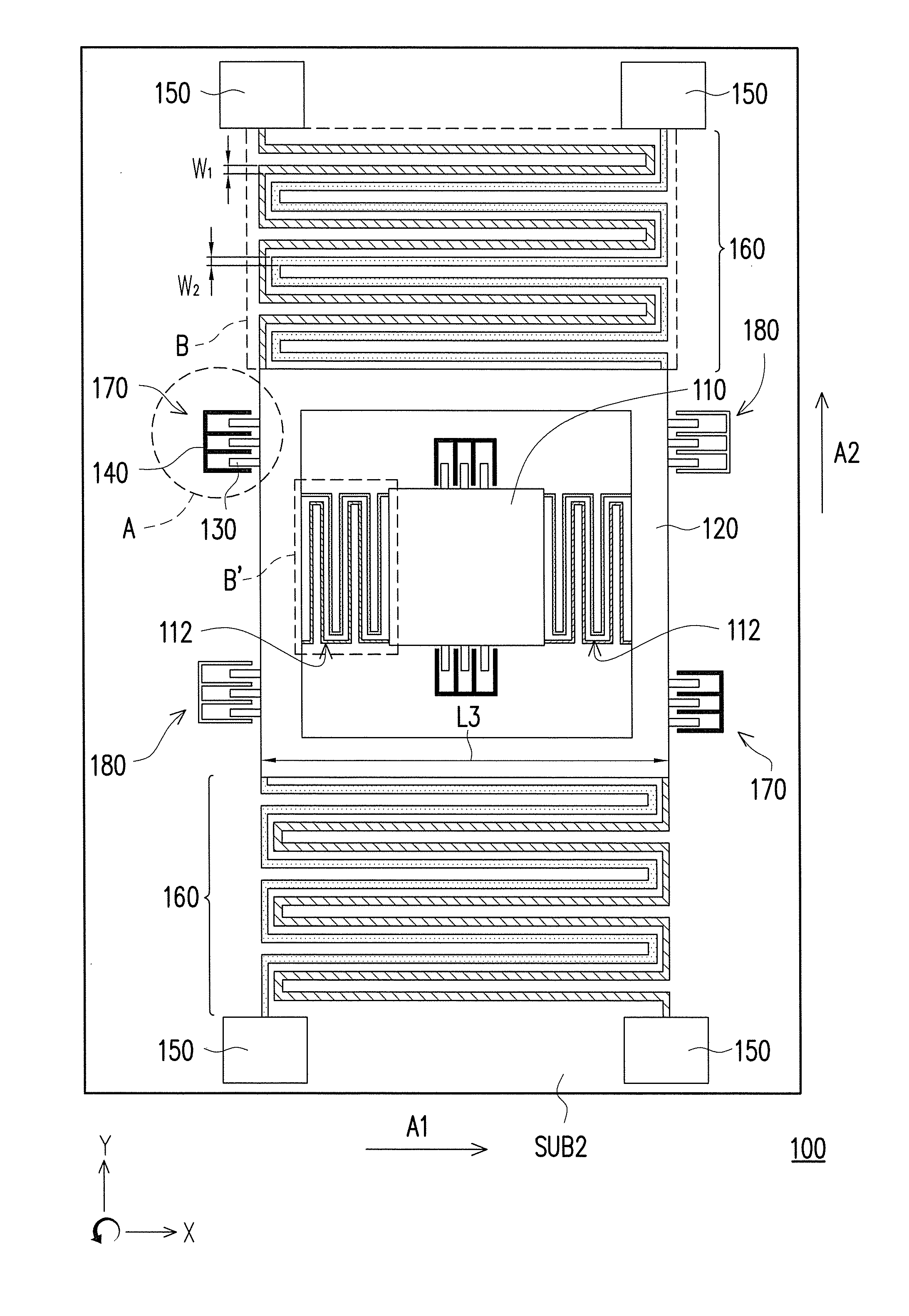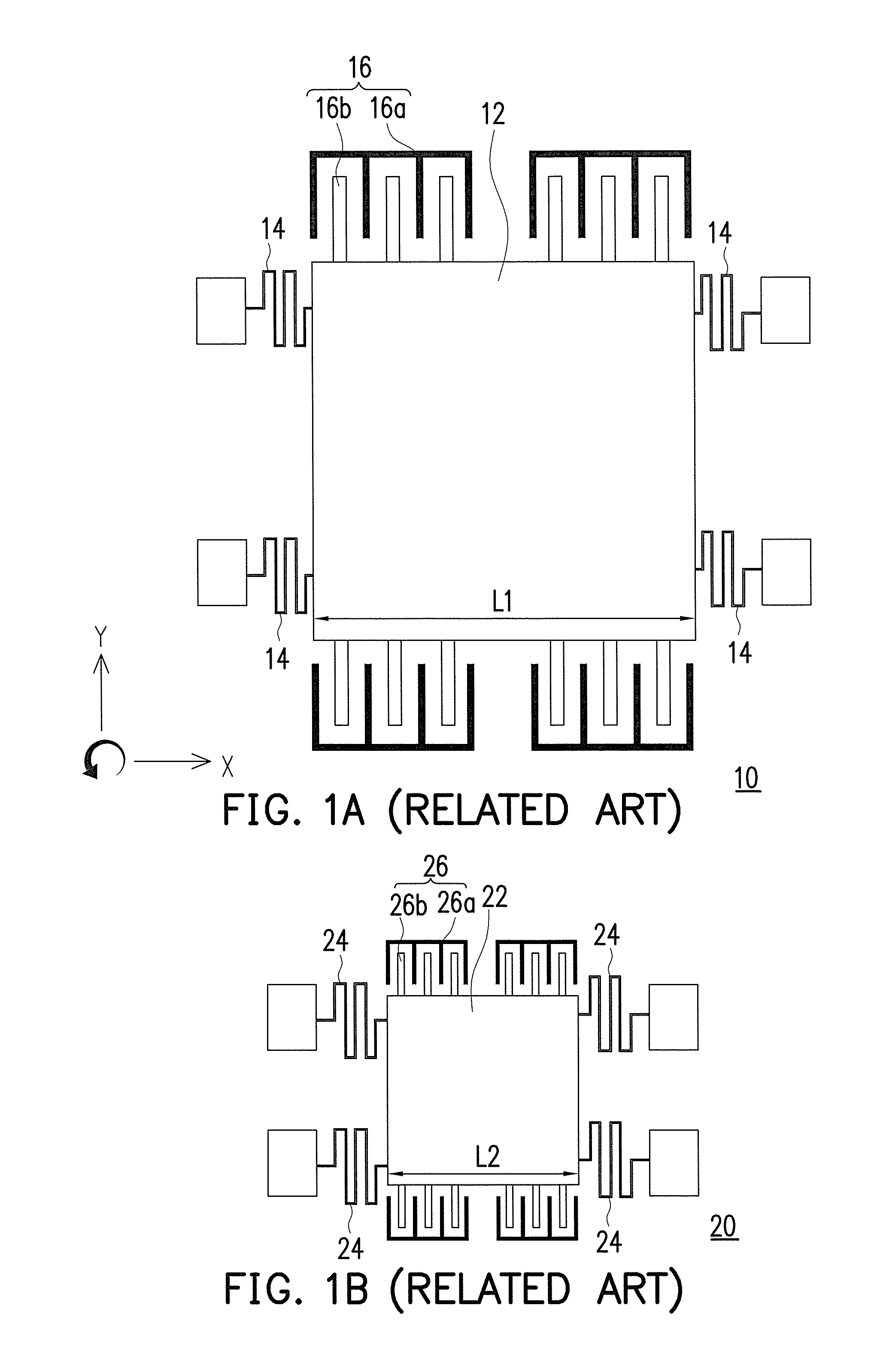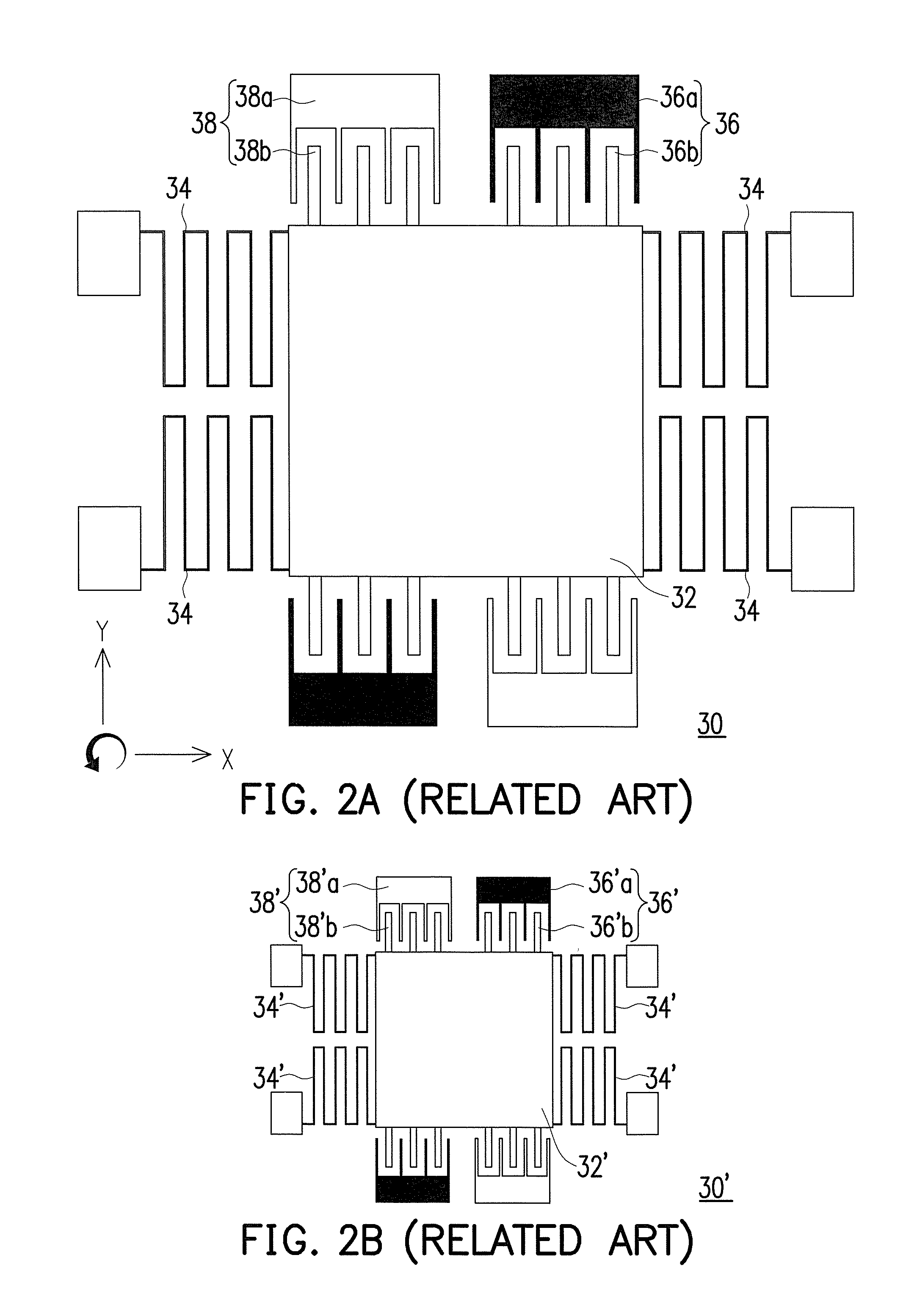Micro-electro mechanical apparatus with interdigitated spring
a mechanical apparatus and micro-electro technology, applied in the direction of speed/acceleration/shock measurement, measurement devices, instruments, etc., can solve the problems of reducing the tolerance of fabricating errors, reducing accuracy and sensitivity, and excessive stiffness of the conventional spring. the effect of frequency dri
- Summary
- Abstract
- Description
- Claims
- Application Information
AI Technical Summary
Benefits of technology
Problems solved by technology
Method used
Image
Examples
first embodiment
[0054]FIG. 7A is a schematic diagram of a micro-electro mechanical apparatus according to the first embodiment of the disclosure. FIG. 7B is a partial enlarged view of a region A of the micro-electro mechanical apparatus of FIG. 7A. Referring to FIG. 7A, the micro-electro mechanical apparatus 100 is, for example, a micro-electro mechanical gyroscope adapted to sense an angular velocity, and includes a substrate SUB2, a first mass 110, a second mass 120, movable electrodes 130, stationary electrodes 140, anchors 150 and a first interdigitated spring 160.
[0055]The second mass 120 is, for example, a frame structure, the first mass 110 is disposed in the second mass 120, and a second interdigitated spring 112 is connected to the first mass 110 and the second mass 120 along a first axial direction A1. The movable electrodes 130 are disposed at two opposite sides of the second mass 120 along a second axial direction A2. The stationary electrodes 140 are disposed on the substrate SUB2 alon...
second embodiment
[0062]Besides the aforementioned micro-electro mechanical apparatus suitable for sensing angular velocity, the disclosure can also be applied to other types of micro-electro mechanical apparatus. For example, FIG. 8 further illustrates a micro-electro mechanical apparatus adapted to sense acceleration.
[0063]The micro-electro mechanical apparatus 200 of FIG. 8 includes a substrate SUB3, a first mass 210, movable electrodes 220, stationary electrodes 230, anchors 240 and an interdigitated spring 250. The movable electrodes 220 are disposed on the first mass 210 along the first axial direction A1. The stationary electrodes 230 are disposed on the substrate SUB3 along the first axial direction A1, where the stationary electrode 230 and the movable electrode 220 form a sensing electrode 260. The movable electrode 220 of the sensing electrode 260 and the stationary electrode 230 of the sensing electrode 260 have a critical gap there between, and the critical gap is formed between the mova...
third embodiment
[0067]FIG. 9 illustrates another micro-electro mechanical apparatus using the aforementioned interdigitated spring and bridges. In detail, the micro-electro mechanical apparatus 300 of FIG. 9 is, for example, a micro-electro mechanical resonator, and includes a substrate SUB4, a first mass 310, movable electrodes 320, stationary electrodes 330, anchors 340 and an interdigitated spring 350.
[0068]In the present embodiment, the movable electrodes 320 are, for example, disposed on the first mass 310 along the first axial direction A1. The stationary electrodes 330 are, for example, disposed on the substrate SUB4 along the first axial direction A1, where the stationary electrodes 330 and the movable electrodes 320 form a sensing electrode 360 and a driving electrode 370. The movable electrode 320 of the sensing electrode 360 and the stationary electrode 330 of the sensing electrode 360 have a critical gap there between, and the critical gap is formed between the movable electrode 320 and...
PUM
 Login to View More
Login to View More Abstract
Description
Claims
Application Information
 Login to View More
Login to View More - R&D
- Intellectual Property
- Life Sciences
- Materials
- Tech Scout
- Unparalleled Data Quality
- Higher Quality Content
- 60% Fewer Hallucinations
Browse by: Latest US Patents, China's latest patents, Technical Efficacy Thesaurus, Application Domain, Technology Topic, Popular Technical Reports.
© 2025 PatSnap. All rights reserved.Legal|Privacy policy|Modern Slavery Act Transparency Statement|Sitemap|About US| Contact US: help@patsnap.com



